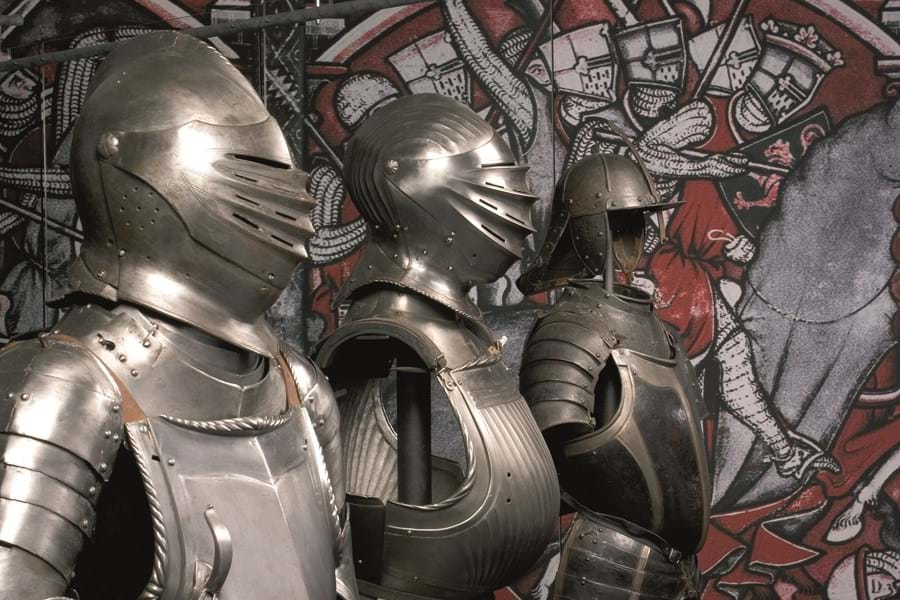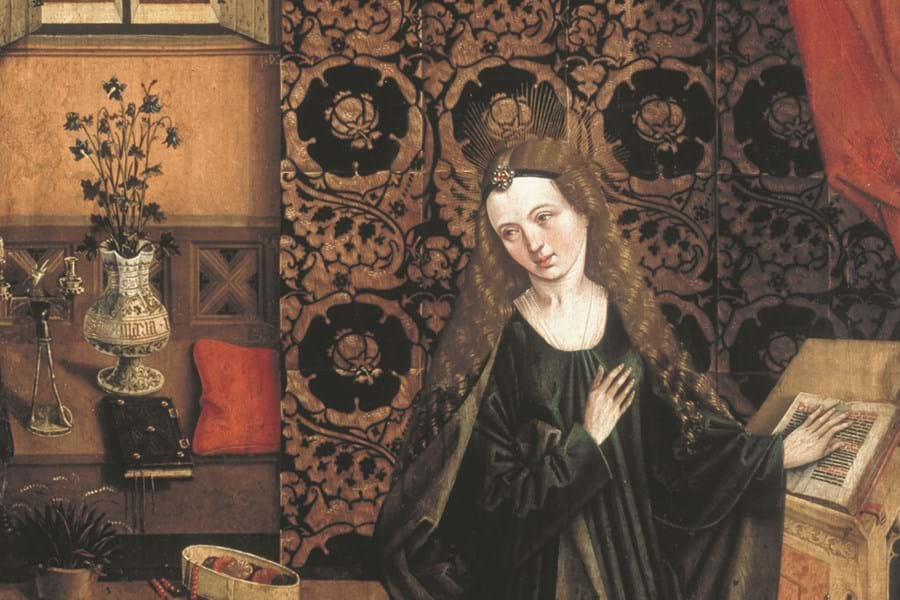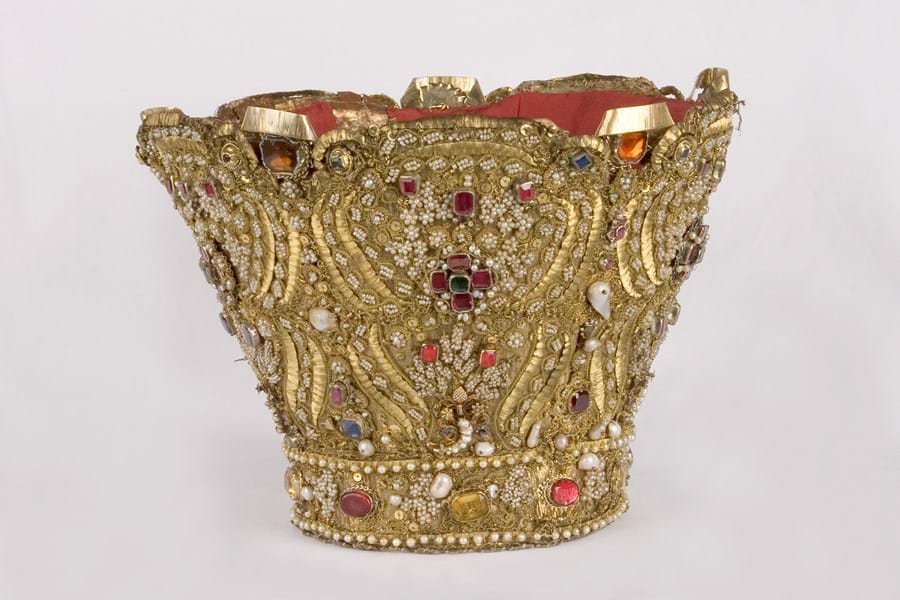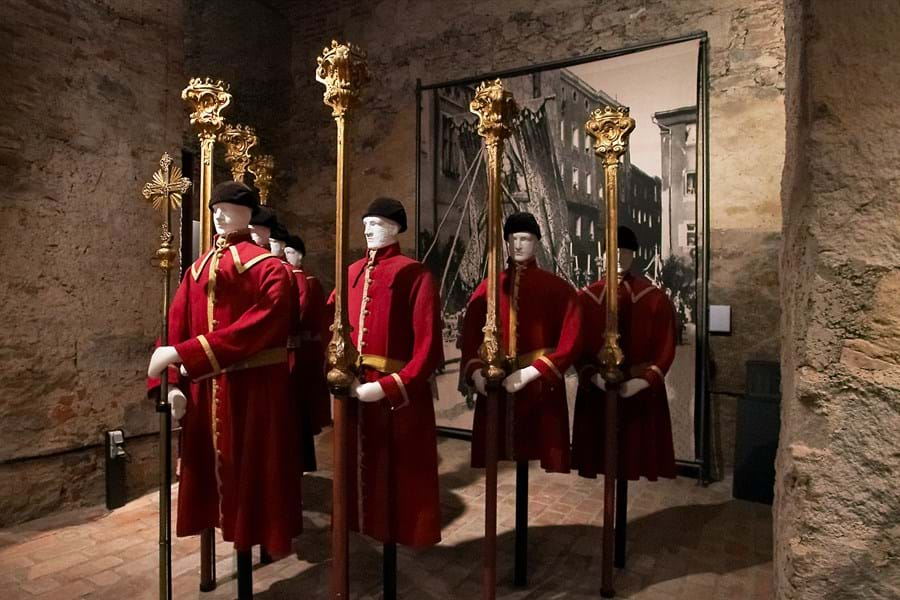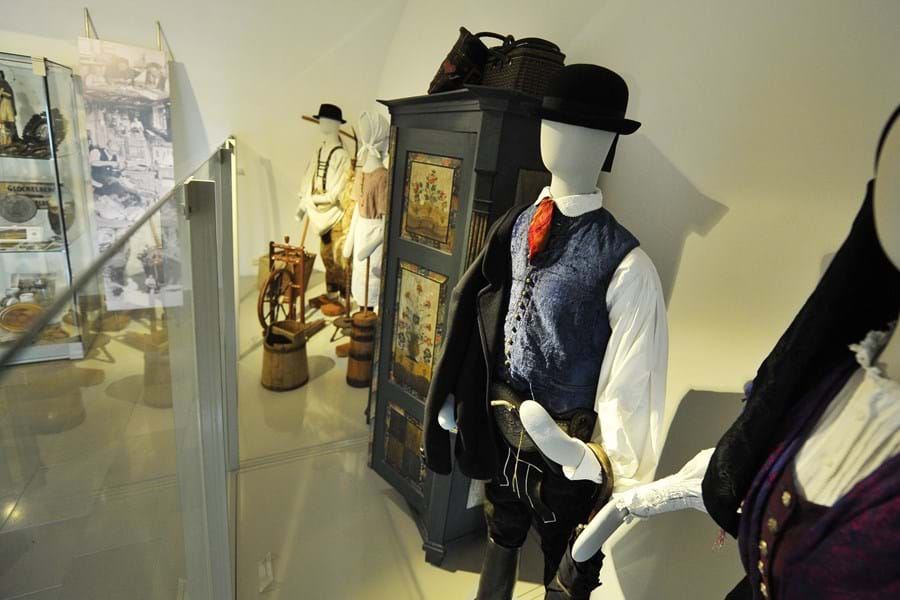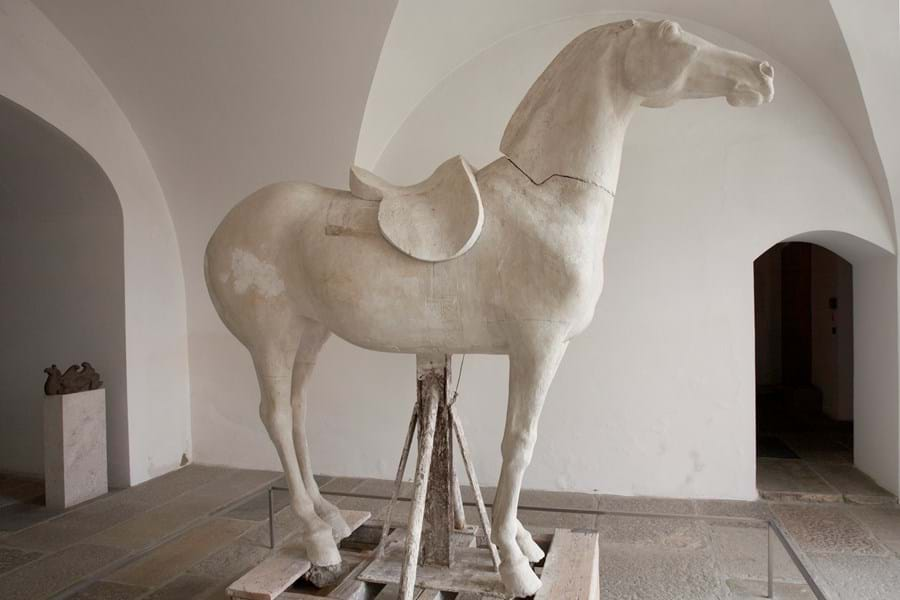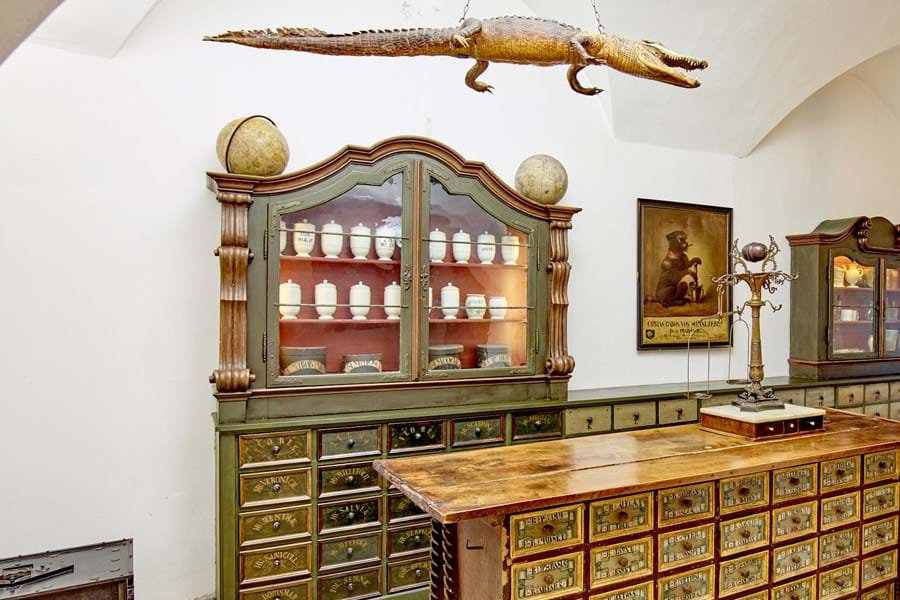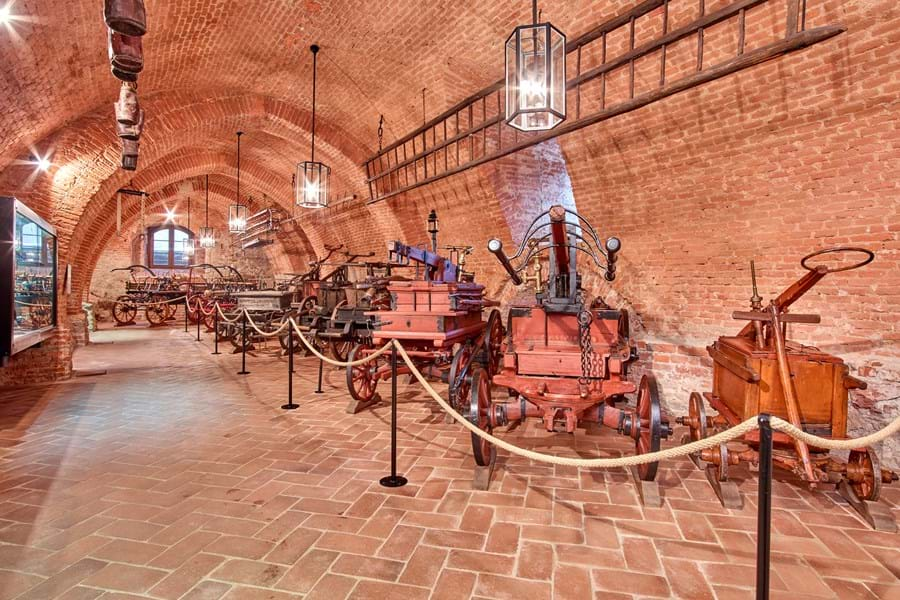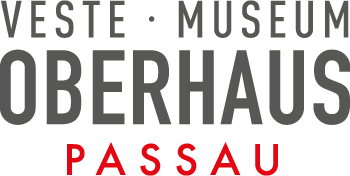Fascination Middle Ages | Earthly Life
The medieval castle was both a symbol of power and a place to live at the same time. The first part of the exhibition "Fascination Middle Ages" offers insights into how castles were constructed, and introduces visitors to their builders and inhabitants. Rare finds reveal the luxury at the prince bishops’ court and provide insights into the everyday lives of the servants at Veste Oberhaus, and at several stations visitors are encouraged to actively participate. They can find out, first-hand, that life at the castle was far from romantic: it was primarily cold and dark, shoes were uncomfortable, and from inside a knight’s helmet it was hard to see very much at all.
Fascination Middle Ages | Spiritual Life
The second part of the exhibition "Fascination Middle Ages" describes the central meaning of religion for artistic development in the Middle Ages. Visual artists were seen as artisans, and the idea that an artist would create artworks purely for aesthetic pleasure was something quite unknown. At a time when only few people could read, the works of artists were created for the purpose of spreading the heavenly message, and were worshipped as portrayals of divine glory. The section of the exhibition named "Spiritual Life", in the Princes' Building of Veste Oberhaus, shows how religious ideas were conveyed pictorially over the centuries and contains magnificent medieval panel paintings from the Passau Diocese Collection.
Passau | Myth and History
The multifaceted history of Passau, from its origins up until secularisation in 1803, is displayed across 800 square metres at the Oberhausmuseum. Almost 7000 years ago, the first people settled at the confluence of Danube, Inn and Ilz. This exceptional geographic location enabled the town to become a trading centre of great economic and cultural significance. Among its most important trading commodities was salt – the "white gold" of the Middle Ages.
Numerous historical exhibits and multimedia presentations bring different milestones in the town’s history back to life. Ranging from disputes between citizens and prince bishops to religious upheavals, economic decline and major disasters, the exhibition comprehensively portrays a many-faceted and often complex town that today, with its baroque flair and its three rivers, justifiably ranks as one of the finest in Germany.
Guilds and Craft | The mystery of the brotherhoods
In the historical cellar vaults of the Princes' Building, the Oberhausmuseum sheds light on the history of guilds and craft. The guilds and brotherhoods that originated during the Middle Ages were an important part of community life and had important social functions. Learning a craft and becoming a member of a guild was something highly sought-after – it was also subject to strict rules, however.
Numerous historic exhibits from "guild life" and their functions illustrate the importance of these institutions and the people’s pride in them. Different guilds that had a formative influence on Passau - such as those of the salt traders, chandlers and gingerbread makers - are presented here. The transition to the modern era and the new production methods arising from industrialisation forced many artisans to break new ground, as the example of a potter from Passau shows.
Bohemian Forest Museum
The Bohemian Forest Museum sees itself as the successor institution to the Böhmerwaldmuseum in Horní Planá/CZ, which was opened in 1923. Following the forced displacement, the museum was reopened in Passau, the adopted town of the “Böhmerwäldler”, in 1954 at Veste Oberhaus, and was designed and maintained by the association "Verein Böhmerwaldmuseum Passau e.V." (later the "Förderverein Böhmerwaldmuseum Passau e.V."). Since 2012, the museum has been run by the town of Passau. The association still administers the collection and hosts events in order to familiarise its supporters and sponsors with the special culture and landscape of the Bohemian Forest.
Alongside presenting the history, culture and living conditions of the early inhabitants of the Bohemian Forest, the association also strongly promotes understanding between the two neighbouring countries.
Hans Wimmer Collection
Since 1987, the sculpture collection of Professor Hans Wimmer (1907-1992) – conceived and established by the artist himself and presenting a cross-section of his artistic oeuvre – has been located at the Oberhausmuseum.
Wimmer is considered to be the most important member of the "Münchner Bildhauerschule" (Munich Sculptors’ School), which strongly influenced the development of German sculpture during the 20th century. The artist, who was born in Pfarrkirchen and had a penchant for horses, was not only the "best horse sculptor of the century" (Heinz Spielmann) – he was also represented at exhibitions all over Europe, and held professorships at the Fine Arts Academies in Hamburg, Nuremberg and Düsseldorf. The sculptures on display include life-size horses, an extensive menagerie of animals, numerous portrait busts and large-scale sculptures.
Historical Apothecary
The items inside the “Passauer Hofapotheke” from the 17th century were bequeathed to the Oberhausmuseum by the pharmacist’s family. The pharmacy on Residenzplatz was once responsible for medical care at the prince bishops’ court, and was first mentioned in 1384. At Veste Oberhaus you can see the main room of the pharmacy with its dispensing desk, wall cabinets, scales – and also a crocodile, a common sight in medieval pharmacies. The adjoining laboratory features many historic tools for producing medications, ointments and tinctures.
Passau Porcelain
In the 19th and early 20th century, Passau was home to a widely-known porcelain factory. Thanks to abundant kaolin deposits in the Bavarian Forest and to French designs, the entrepreneurial family Lenck was able to turn the factory into one of Lower Bavaria's leading industrial facilities. Aside from everyday tableware and refractory cement for the building trade, its products mainly included luxury items that were exported all over the world. The extensive collection at the Oberhausmuseum includes delicate Rococo figurines, elegant dancers, Napoleonic soldiers and numerous animal figurines.
Fire Museum
The former cannon vault of Veste Oberhaus today houses a Fire Museum, providing interesting insights into the equipment, development and uniforms of the Lower Bavarian fire brigades from the late 17th to the early 20th century. Following the two catastrophic fires in Passau during the 17th century, equipment and fire-fighting techniques gained importance. Alongside hand sprayers, leather fire buckets and smoke masks, hose carts and many other vehicle models reveal that the technical standards of past centuries were surprisingly high.
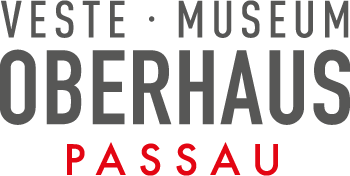 Oberhausmuseum Passau
Oberhausmuseum Passau
 Oberhausmuseum Passau
Oberhausmuseum Passau
